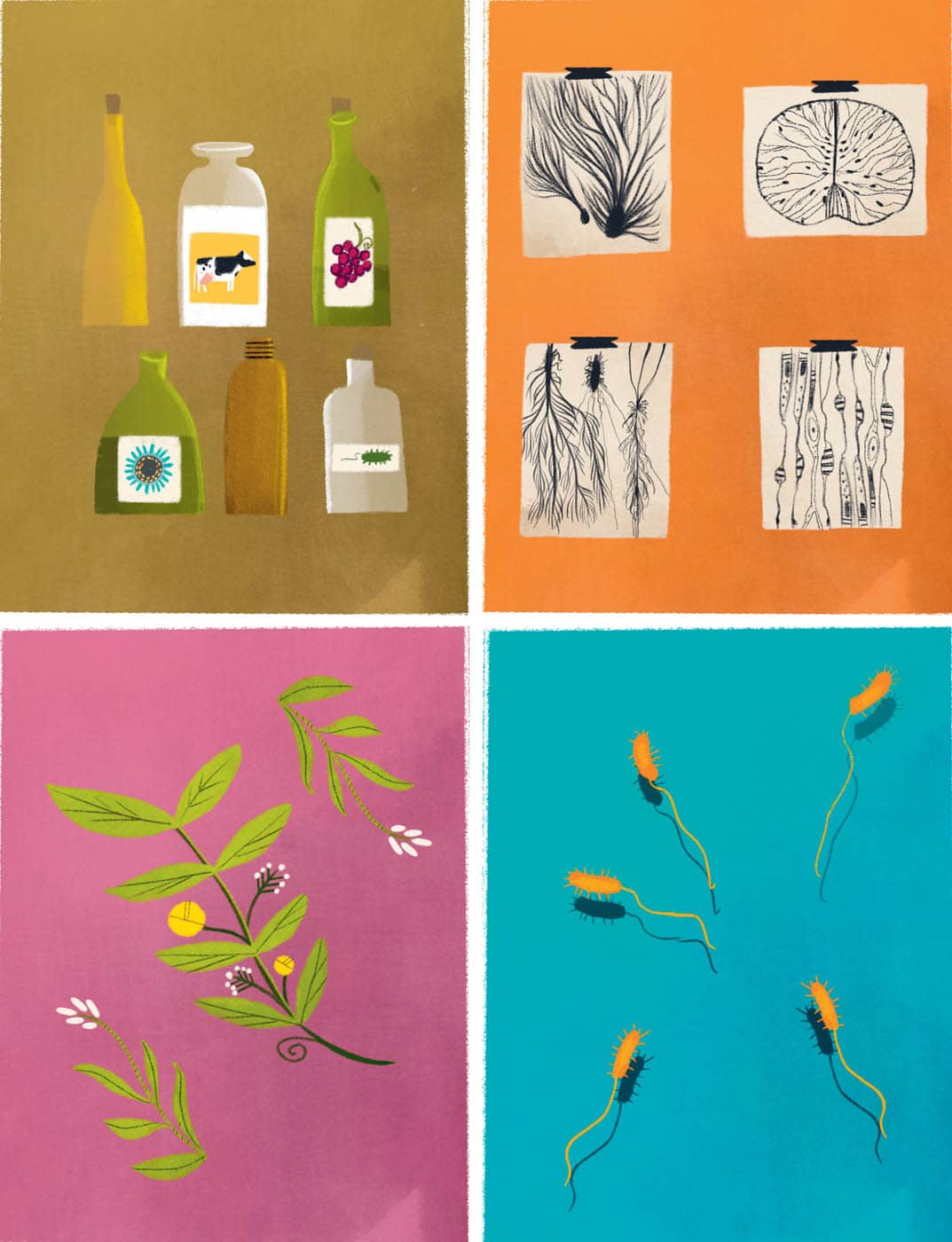INTRODUCTION

With a few simple ingredients, you can bring science history to life. Table salt, water, and a raw egg are all you need to try an experiment once performed by Charles Darwin to test whether bird and reptile eggs could float from South America to the Galápagos Islands. Recycle a cardboard tube to see with your own eyes how Patricia Bath’s innovations in cataract surgery restored the vision of millions of people. Grow microbes on agar medium to learn how Frannie Hess’s idea revolutionized microbiology. Transform jars, apple juice, and straws into simple versions of swan-necked flasks to replicate one of Louis Pasteur’s most famous experiments.
Biology for Kids takes you on a hands-on journey through the lives and work of twenty-five fascinating biologists, past and present. These scientists are a small sampling of the large, diverse group of people who study biology, the science of life. Following each scientist’s story, a lab will guide you through an experiment or project based on a concept related to their work.
Long before the word biologist was coined, people around the world realized that by studying the world around them, they could improve their lives. Learning about plants and insects helped them discover new medicines and grow better crops. Studying animals taught them how to raise healthy cattle, horses, and poultry for food or transportation.
Eventually, some famous scientists appeared on the scene and the field of biology started to take shape. In ancient Greece, Hippocrates established medicine as a profession and Aristotle and Theophrastus wrote books about plants and animals. An Iranian botanist and astronomer named Al-Dinawari published a six-volume book of plants.
Around 1670, a Dutchman named Anton van Leeuwenhoek put together the first microscope and called the creatures he saw moving in a drop of pond water “animalcules.” His invention helped scientists understand that all living thing are made up of individual units called cells and the field of biology exploded with new ideas.
The variety of life on Earth, which scientists call diversity, is astonishing. In addition to plants and animals, microbes too small to see without a microscope are everywhere: in the air, the soil, the water, and even our bodies. As living things grow in communities, they claim space, gather what they need for survival, and reproduce. Living organisms often cooperate with their neighbors in return for longer, healthier lives. Some trees partner with mushrooms in the soil at their roots. Certain termites grow special fungal gardens, which helps them to digest the wood they eat. Humans depend on the microbes inside of our bodies for survival.
Today’s biologists study everything imaginable. From oceans, jungles, and cities to the space station—the universe is their laboratory and there are countless branches of biology to explore. Some biologists map coral reefs or study how animals are changing their behavior as humans move into their territories. Others sequence deoxyribonucleic acid (DNA) or search for ways to improve human health. Building on past discoveries, modern biology propels us forward to new frontiers of understanding.
Whether you hope to be a microbiologist, a shark scientist, or an artist one day, I hope that Biology for Kids will help you to appreciate the living things around you.
